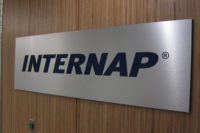A newly constructed, 250 room high-rise tower known as Northern Quest Resort & Casino rises steeply from the mildly flat terrain of Airway Heights, just outside of Spokane in Washington State. The Kalispel Tribe of Indians transformed a previously smaller casino into a 660,000 square foot regional luxury resort destination.
The casino features more than 2,000 slot machines, 37 table games, nine poker tables and a Keno/Off-Track Betting Lounge. Both the 14,000 square foot Current Spa & Salon and The Q sports bar, complete with 30 by10 foot HDTV screen, beckon guests to stay a while. The property also includes a massive pavilion that serves as a main event center/theater and features seating for up to 1,250 people. Parking for patrons is located behind the resort in a six-story parking structure with some 1,480 stalls.
Securing a facility of this size, especially one that provides nearly 1,700 local jobs and $1.7 million in purchases of goods and services each month, was no simple task. The combined foot traffic of employees and goods alone, not to mention guests and visitors, was enough for any IT or security director to grow weary.
Keeping the facility’s size and scope in mind, it was essential that an access control system be put in place. The ideal system would be cost-effective and forward thinking with its technology, as well as boast the capability of expansion. Since the hotel is mostly encased in concrete and void of any traditional low-voltage security cable design, the options were limited. Therefore an IP-based system seemed to be most logical choice.
Northern Quest Resort & Casino’s executive director of IT, Aaron Fisher, in collaboration with SAFE Installation Services Corp., the project’s security integrators, was tasked to design and complete the job. The perfect combination of innovative products, an IP-savvy integrator, and an open-minded IT director — all lead to the perfect solution. PCSC’s Fault Tolerant Controller architecture, utilizing edge devices, was more than capable of taking advantage of the resort’s IT backbone.
Early in 2010, PCSC, the access control systems manufacturer, conducted a thorough review of this facility and the security installation. PCSC Director of Sales Brian Lyle conducted an interview with Fisher and Adrian Steik, president of SAFE Installation Services Corp.
“How much of the building operates on IP? Is it 100 percent IP including the security? How did this impact the access control installation?” asked Lyle.
“Everything is IP! Whether it is a TV, point-of-sale, telephone, fax line, business center, Internet — whatever it is — it runs on the same investment of our CAT-5 infrastructure,” answered Fisher.
According to Steik, the development of IP technology is allowing, even necessitating, partnerships with IT for a solution.
“Admittedly, in the past the IT department has not been our ally in the access control market. Previously, you would sit in a meeting and IT wouldn’t necessarily be willing to work with you,” Steik commented. “Times are changing, and the technology is such now that we all need the IT guy. Every one of our systems interfaces with the IP infrastructure. We can’t have boxes and cables in stand-alone systems anymore. You can’t hire a tech department to work on your access control and CCTV system constantly — nobody can afford that — so you turn to your IT experts. With our technology capabilities now, IT is our friend. Not just that, IT has the budget and the ability to make this all work.”
Fisher had made a substantial investment in the infrastructure for things that traditionally use the network: point-of-sales, Internet access and back of the house computers. “Adding the CCTV and access control systems really just became a small port count change. We did not have to contend with the added costs of infrastructure because I already had that in place. It was a real win-win scenario for us,” explained Fisher.
Steik added, “SAFE is not a large enough company to be able to accomplish this install in a traditional analog method. The labor relations on the building, being mainly a labor union project, would have escalated Fisher’s costs to over four times what it was. Analog would mean conduit and cabling and a 400 percent increase, as well as the additional time frame to complete the project. What we managed to get done in a few months would have taken us the entire construction cycle to do in the analog world of CCTV and access control. We are 100 percent power over Ethernet (PoE) at this facility, so it’s not just that we are IP here, it is that we are IP without plugging anything into a receptacle.”
Fisher pointed out the critical role PoE played in helping get the project off the ground. “From the construction side to the maintenance side, needing and getting electricity is a big task here,” said Fisher. “I was trying to avoid an implementation that required an electrician at every door adding more power, or any of those kinds of increases — it would have never happened. So, it was a really easy fit; all of our devices are PoE. SAFE came in and said, ‘We can do that, just run an Ethernet cable here and you’re in.’ Nobody else is doing that.”
Transitioning to an IT state of mind was critical to the project’s success, according to Lyle.
“I think what we struggle with is that our traditional dealers such as SAFE would typically be talking security to the security and surveillance teams. Every time SAFE had to ask for an IP address, the guy from security and surveillance had to go talk to IT. So at that point it became a cost to IT for him to go do that work, and so on,” said Lyle.
“We had to break into this market place of pushing IP all the way to the door. So we did! PCSC, in conjunction with HID, offered a product that does just that. But in the same breath, we now have to go through the process of turning our dealer’s attention and focus to include working very closely with IT teams. The concern with much of it is that every time you install an IP address at a single door, do you know what the cost is to maintain that one IP address? That was the IT manager’s reaction to the security guy. Another reaction from the IT team was, ‘I’m not going to do something I can’t control.’ That’s why our typical system integrator would install Wiegand wire out to 10 or 12 doors (along with lock power) then run it back into a single panel, then ask for one IP address for that single panel,” commented Lyle.
IT traditionally is protective of the network. As Fisher explains, “Traditionally we (the IT department) are going to say something like, ‘If we don’t control it, it’s not going up on my network!’ This comes from a fundamental philosophy that we are responsible for it. Whenever you get outside our comfort level, it is difficult. For SAFE/PCSC guys to succeed I think understanding network infrastructure and ‘speaking IT?language’ is vital to the success of working with IT professionals. I believe all departments and groups can see the benefits of working cooperatively with IT to accomplish never-before-possible goals.”
IP is the next generation of access control. PCSC’s Fault Tolerant Architecture, as demonstrated by the success of the Northern Quest Resort & Casino, is a real-world solution. A solution once only available to large enterprise customers is now available and scalable for any building.




